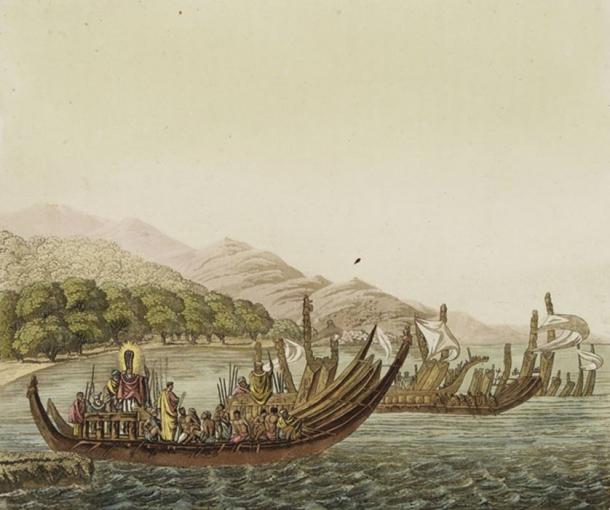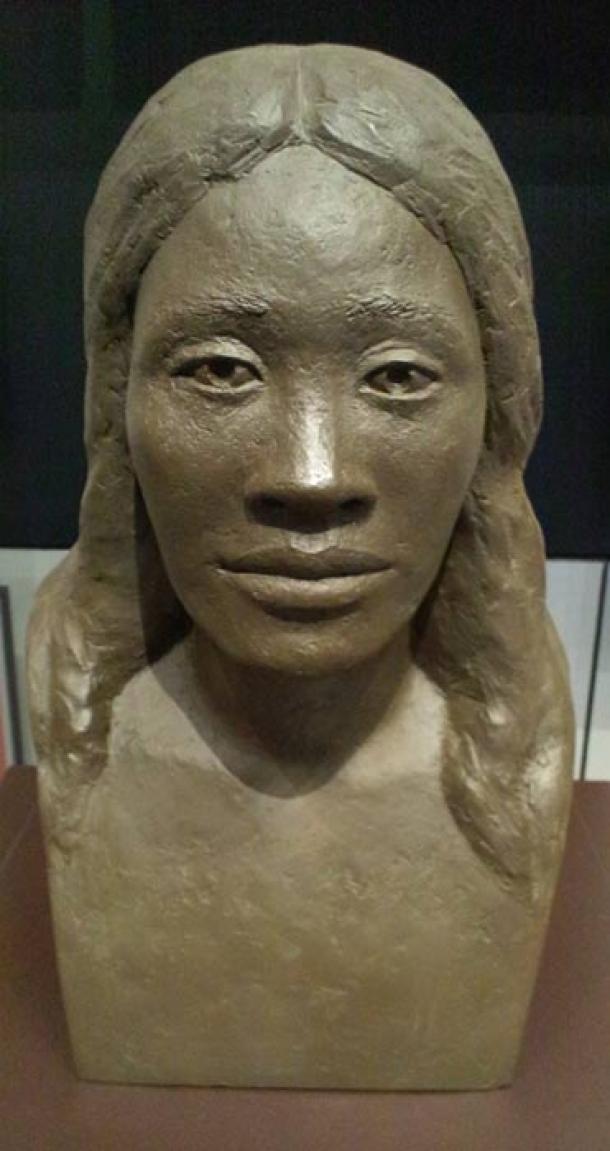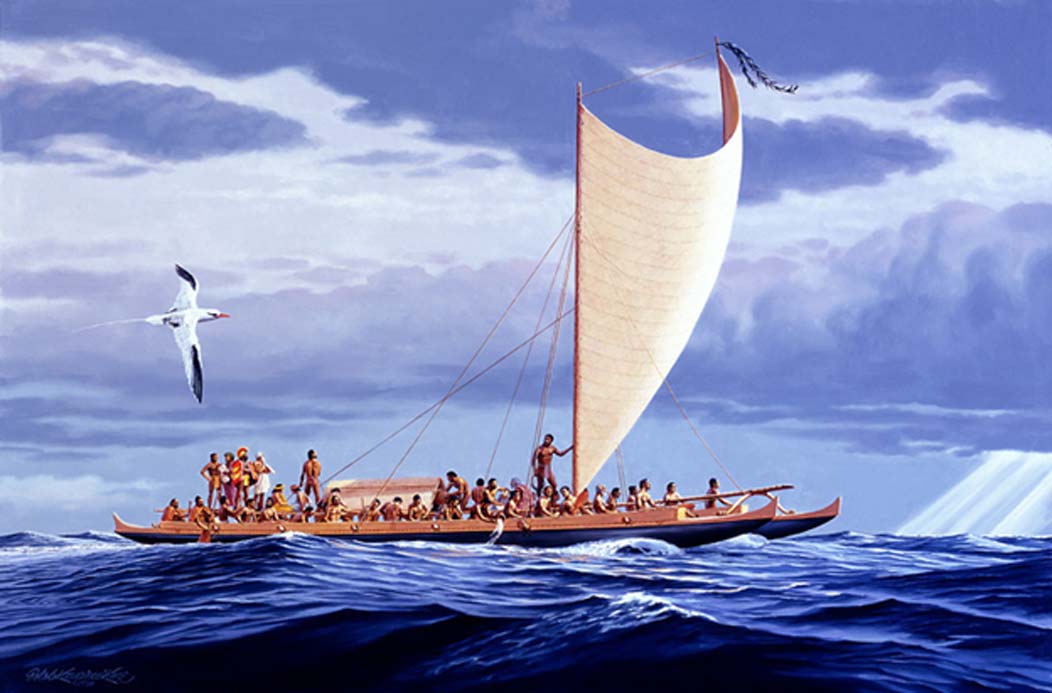Where Did the Polynesians Really Come From?
Oceania was the last region to be settled by humans and the last part of Oceania to be settled by humans was Polynesia. Polynesians are famous for their voyages to remote islands in distant parts of the Pacific. Using outrigger canoes, they founded a society across islands stretching in a triangle from the Hawaiian Islands to Easter Island to New Zealand. That society was reasonably well-connected by trade, language, culture, and religion, despite its distribution over such a large area.
One major question today is where did the Polynesians originally come from? Several theories have been proposed over the years, but one which is gaining ground is that the Polynesians originated from Taiwan, parts of Papua New Guinea, and Southeast Asia. Another intriguing area of study is the genetic connection between Polynesians and South Americans.
Could the Polynesians Have Origins in South America?
One early theory of the origin of Polynesians is that they came from South America and sailed west, eventually reaching the Polynesian triangle. This was proposed by the archaeologist, writer, and explorer Thor Heyerdahl, who even constructed a Polynesian balsa wood raft and, with a team, sailed it west of Easter Island from the South American coast. This demonstrated the feasibility of using a primitive craft to cross the Pacific.

Girls Carrying a Canoe in Samoa by John La Farge. (Public Domain) Polynesian outrigger canoes may have been used to cross the Pacific.
The thing to remember about experimental archaeology is that just because something could have theoretically been done doesn’t mean that it actually happened that way. Although it is plausible that Polynesia was settled by ancient South Americans; all the genetic, linguistic, and ethnographic evidence points toward a predominantly southeast Asian origin.
- Ghost Beliefs in Polynesia: When Spirits Return and Possess
- Ancient Skulls Give Insights into Origins of Polynesians
- Disney ALMOST Got It Right: From Moana to Mayhem, The Mythology Behind the Real Maui
The Express Train or Slow Boat to Polynesian Origins
The two main theories today are called the Express Train Hypothesis and the Slow Boat Hypothesis. The Express Train Hypothesis says that Polynesians originally come from Taiwan by way of the Philippines and Melanesia. According to this view, Polynesians are mainly a part of a migration wave that came out of Taiwan.
The western part of Polynesia was settled between 3000 and 1000 BC by people from Taiwan via the Philippines as well as parts of New Guinea. Eastern Polynesia was settled beginning around 900 AD as Polynesian voyagers began to set out from Tonga and Samoa and other islands of western Polynesia to settle the Hawaiian Islands, New Zealand, and Easter Island, among other islands of the region.
According to the Slow Boat Hypothesis, the ancestors of the Polynesians are of Austronesian descent and still have a connection to Taiwan, but the ancestors of modern Polynesians spent several centuries intermarrying with people of Papuan and Indonesian lineage before setting out to Polynesia.

Depiction of possible Tahitian warrior dugouts. (Public Domain) Much of the origins of Polynesians remains uncertain.
The first view is supported by linguistic and ethnographic data, but there is genetic evidence for the second hypothesis. Genetic studies have shown, for example, that a significant percentage of the Polynesian population has y-chromosomal DNA haplogroups coming from Papua New Guinea while most of the mtDNA comes from haplogroups in Taiwan and Southeast Asia.
This suggests some degree of intermarriage between Polynesians and other Austronesian groups as well as non-Austronesian groups. Another possible line of evidence for this hypothesis comes from the fact that there is a gap in the language evolution of Polynesian Austronesian languages. Polynesian languages have features that no other Austronesian languages possess. This could be because of interaction with Papuan and Indonesian populations.

Reconstruction of the face of a Lapita woman. National Museum of Ethnology, Osaka. (Yanajin33/CC BY SA 3.0) Genetic studies have shown that most mtDNA in Polynesia comes from Taiwan and Southeast Asia.
Are there Amerindian Connections to Early Polynesians?
It is even possible that Thor Heyerdahl may have been partly right about an Amerindian connection. Genetic studies of the Rapa Nui of Easter Island reveal a small percentage of Native American ancestry (8%). To be fair, this study also revealed 16% European ancestry for the Rapa Nui.
However, the genes and haplogroups associated with European descent are much less degraded due to recombination than those associated with Native American descent, making it clear that European haplogroups are from 19th century Europeans intermarrying with the natives. The genes associated with Native American ancestry are much older, suggesting a date closer to the 13th-15th centuries AD for these elements entering the genes of the Rapa Nui.
However, a study in 2020 has suggested that the date for Polynesians meeting South Americans should be pushed back even further, to around 1150 AD. The nature of those genetic links and the location for that first contact also differs from previous beliefs. As Ed Whelan writes:
“Genetic evidence appears to prove that Polynesians are related to present-day Indigenous people, especially from the coast of Colombia and Ecuador. Interestingly, the DNA study concludes that the earliest contact was on Fatu Hiva, an island in the South Marquesas islands, sometime around 1150 AD, and not Rapa Nui which is much closer to the coast of South America.”
Is it possible that Amerindian cultures are partially responsible for the colonization of Polynesia, or at least part of it, after all?
- DNA Study reveals connection between Brazil and Polynesia. Well, how?
- New study suggests that the Philippines is the ancestral homeland of Polynesians
- The Menhune of Hawaii – Ancient Race or Fictional Fairytale?

Genetic analysis appears to prove that Polynesians have genetic roots tracing back to diverse regions across the Pacific and the Americas, denoting the mixed origin of the population. (Ruben Ramos-Mendoza / Nature)
Although it is possible that South American voyagers sailed to Polynesia to meet the Rapa Nui or another group of Polynesians, the Polynesians are known to have been more skilled at seafaring at the time, so it is more likely that it was the Polynesians who came to the Americas. The Polynesians may have come to South America to trade with the natives, and as a result may have ended up also bringing home South American brides.
Intriguingly, there is circumstantial evidence for pre-Columbian contact between Native Americans and Polynesians - chicken bones that have been found at an archaeological site on a beach in Chile that appear to predate the coming of the Spaniards.
Regardless of where the Polynesians originally came from, their ancestry appears to be more complex than initially thought. The more we learn about historical genetics, the more we realize just how convoluted the communication and intermarriage between different populations was in the past.
If we go far back enough, current thinking is that we are all a mixture of many lineages of mankind which originally diverged from a single lineage that goes back to Africa, perhaps 200,000 years ago.
Top Image: A Wa'a Kaulua (double canoe) of Hawaiian Nobility of the 18th Century. Polynesia was inhabited by skilled seafarers. Source: Herb Kawainui Kāne
By Caleb Strom
Updated on August 26, 2020.
References
“Epic pre-Columbian voyage suggested by genes” by Andrew Lawler (2014). Science. Available at: http://www.sciencemag.org/news/2014/10/epic-pre-columbian-voyage-suggested-genes
Hage, Per, and Jeff Marck. "Matrilineality and the Melanesian origin of Polynesian Y chromosomes 1." Current Anthropology 44. S5 (2003): S121-S127.
Soares, Pedro, et al. "Ancient voyaging and Polynesian origins." The American Journal of Human Genetics 88.2 (2011): 239-247.


















Comments
Hi Cam. Your post looked interesting so I tried to check out the 2 videos. For me, they came up as unavailable. Maybe because I'm in the US, or some other reason that I don't know. If you could list the name of the documentary, maybe I could track it down.
Information on Polynesian settlement particularly in New Zealand has been overwhelmingly suppressed since at least the 1960's.
Remnants of a 6000 year old Chinese boat, 180 ft wide x 400+ ft long have been found on the Northland west coast, undated ancient stone houses possibly of Peruvian origin have been found in significant numbers, a megalithic wall has been found in a central North island national forest, significant Moa traps have been found dating back 2500 years (pre Maori) skeletons of several different groups of people have been found around NZ and ancient Taoist cave drawings have been found in the South Island, yet the NZ Govt and Universities have ignored what is evidence that will rewrite the "academic theories" of how Polynesia was settled, even though the Maori have always maintained they were not the first people on the islands of NZ.
Here is two parts of one documentary on these findings:
"Skeletons in the cupboard" https://www.youtube.com/watch?v=uxuWPjM5Es4
Part 2: https://www.youtube.com/watch?v=x-HhfbCk2oU
If we look at sunken land masses/mountain ranges and compare them to the generally accepted Bering land bridge depth; the flooding legends from Atlantis and Mu to the Greeks; Hebrew; Japanese et al. start to seem more realistic.
There is also the theory of the lost continent of Mu. Knowing that all the islands are merely the tops of mountains, a catastrophic event could have sunk the continent, forcing the people to flee.
If the theory of the Bering Land Bridge is correct, the sea levels in the Pacific would have been lower, making it much easier to island hop to the Polynesian islands. Would also fall in line with several area myths/legends regarding flooding.